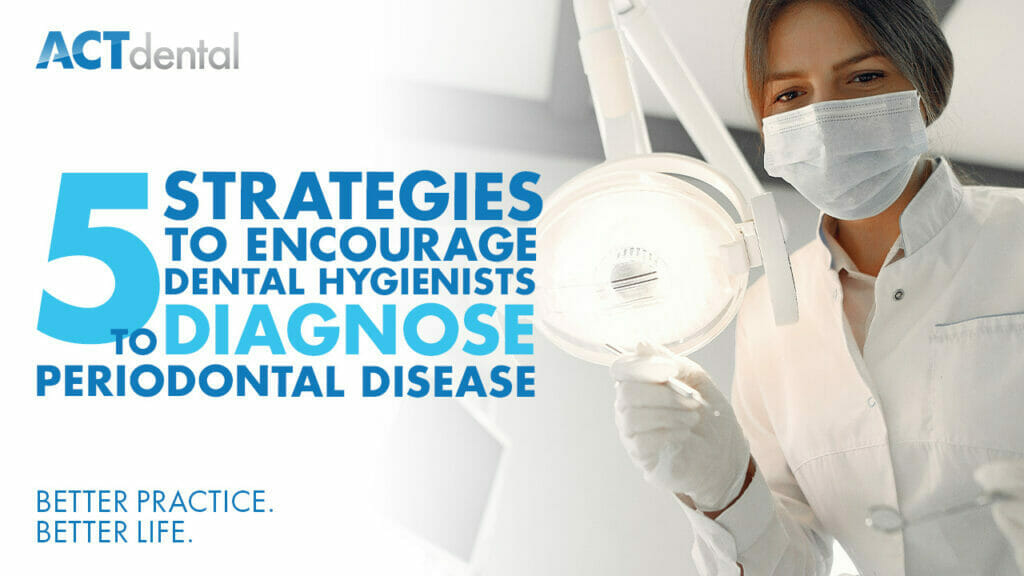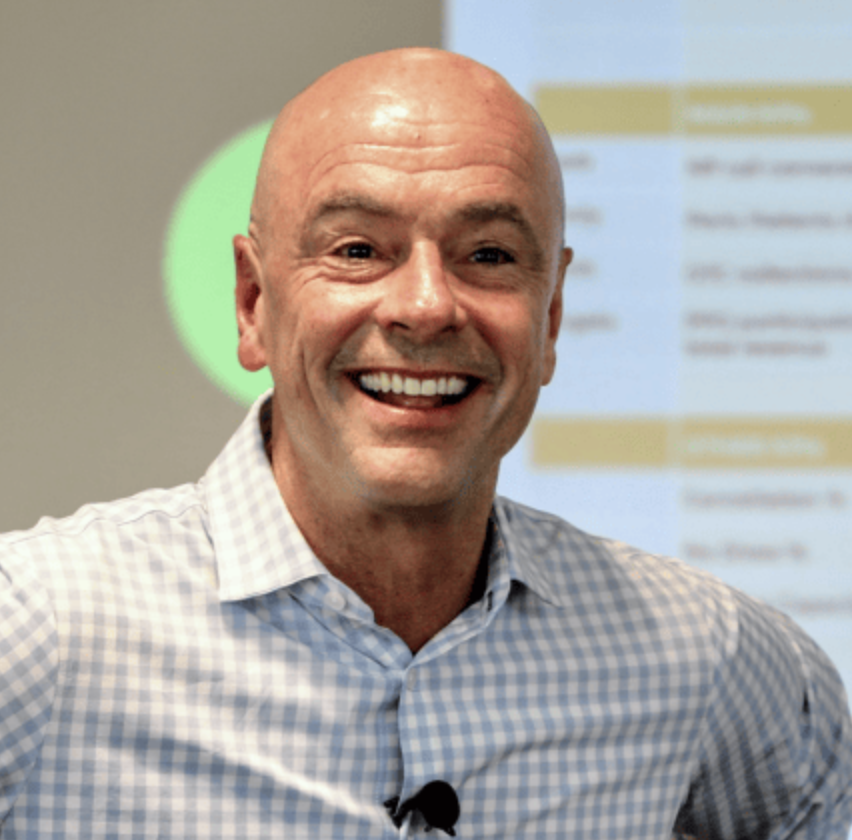Periodontal disease is a serious condition that can lead to tooth loss and other more serious health complications, and it’s a problem over half the population has. We, as well as our patients, now know more than ever about the systemic effects of active periodontal disease, so it’s vital that your hygienists receive the support they need to diagnose it more effectively. It puts patients at risk when hygienists are hesitant to diagnose it or multiple hygienists in the same practice are misaligned in their philosophy of care, and helping patients live longer, healthier lives is the greatest reason to make this change. However, as a practice owner, if you’re not treating active periodontal disease, you’re letting hundreds of thousands of dollars walk out the door, so use these five strategies to encourage your hygienists to diagnose it.
- Provide Education and Training
The hesitancy of team members to diagnose periodontal disease is often due to a lack of knowledge or confidence in their abilities. If keeping your hygienists up-to-date on all the latest developments in periodontal disease is something important to you, you must clarify your expectation to them while also supporting them. Bring in experts from outside the practice to share their knowledge, or encourage your team to seek out external opportunities to learn about periodontal disease, such as the phenomenal Katrina Sanders, who will be doing a hygiene workshop at ACT October 4-5, 2023. No matter the method you choose, these education opportunities will also help your team learn and grow together, becoming more aligned and providing them with more satisfaction, which is a huge benefit during this tough hiring climate.
- Implement a Periodontal Disease Screening Program
Having a consistent screening program for periodontal disease across the entire hygiene department is critical because every patient deserves the same level of optimal care. Most practice management software has a component that’s a periodontal screening form or evaluation component, so get aligned around using that to its fullest potential. It’s necessary to understand that full periodontal charting is so much more than pocket depths, which is what I frequently see because the pocket doesn’t tell the whole story. You also need to be recording recession, furcation, bleeding, and suppuration, as well as getting aligned around how often you perform this charting and what risk factors you’re looking for. Staging and Grading may be challenging, but it builds in risk factors like diabetes, smoking, heart disease, or missing teeth.
- Use Technology to Enhance the Diagnosis
The more technology improves, the more powerful of a tool it becomes for diagnosing periodontal disease, so it’s important to take advantage of what’s available:
- Radiographs have always been important, but incorporating vertical bitewings into your strategy will allow you to measure bone levels.
- Photography, both intraoral and extraoral, is huge because it lets you show the patient exactly what is going on in their mouth and give them the opportunity to learn alongside you.
- Periodontal assessment and tracking tools allow you to gather and present data, which reduces subjectivity.
- Artificial Intelligence like Pearl is incredible. It helps us see so much more in radiographs and present an objective truth to patients where they don’t feel like we’re just selling them something.
- Foster a Culture of Collaboration and Communication
When you encourage your hygienists to collaborate and communicate, it improves their confidence in diagnosing periodontal disease, and that requires creating a space in which team members feel safe admitting what they may not know. Additionally, this will help identify areas where additional training or support is needed, so encourage your hygienists to discuss difficult cases and share their experience and knowledge with one another during team meetings or departmental meetings.
- Establish an Agreement of What Periodontal Health Looks Like
This is actually the easiest place to start, which is why it’s my favorite strategy—it’s actionable, so people can really bite into it. If you can create an agreement around what a healthy periodontal patient looks like, then you’ve set the bar for everything moving forward—you know what healthy is, so by definition, every patient that doesn’t look like that has some form of periodontal disease. From there it’s your job to create a plan for how to treat those unhealthy patients:
- What codes will you use and what do they mean?
- How much time do you need to treat them, and do you have freedom within the schedule to fit them in quickly?
- How often will they return for care?
Finally, document EVERYTHING! As Kirk says, “If it’s not in writing, it doesn’t exist,” and having a document will serve as a reminder for your current team or a teaching tool for new hires.
When you implement these strategies, you’re not going to see a change happen overnight—after all, if you have less than 5% of your patients being treated for periodontal disease now, it will take time to reach the benchmark of 35%—so give yourself grace and celebrate the incremental progress as you make it. Make it easier by starting with the definition of what health looks like, and you will start seeing how many patients disqualify from that and how huge your opportunity to help truly is. It’s important to have consistency in your message, so practice how you’re going to talk about periodontal disease with the entire team. Language matters, so check out Lead Practice Coach Jenni Poulos’ Mastering Verbal Skills webinar to improve the words you use. You don’t have to do this alone, so reach out and schedule a call with ACT. Our team will help you implement these strategies, improving your patients’ lives while helping you achieve a Better Practice and a Better Life!
Keep an eye out for our next blog, in which we’ll discuss the 3 KPIs to Know if Your Periodontal Protocol is Working!
Miranda Beeson is a Lead Practice Coach at ACT Dental
Kirk Behrendt
Kirk Behrendt is a renowned consultant and speaker in the dental industry, known for his expertise in helping dentists create better practices and better lives. With over 30 years of experience in the field, Kirk has dedicated his professional life to optimizing the best systems and practices in dentistry. Kirk has been a featured speaker at every major dental meeting in the United States. His company, ACT Dental, has consistently been ranked as one of the top dental consultants in Dentistry Today's annual rankings for the past 10 years. In addition, ACT Dental was named one of the fastest-growing companies in the United States by Inc Magazine, appearing on their Inc 5000 list. Kirk's motivational skills are widely recognized in the dental industry. Dr. Peter Dawson of The Dawson Academy has referred to Kirk as "THE best motivator I have ever heard." Kirk has also assembled a trusted team of advisor experts who work with dentists to customize individual solutions that meet their unique needs. When he's not motivating dentists and their teams, Kirk enjoys coaching his children's sports teams and spending time with his amazing wife, Sarah, and their four children, Kinzie, Lily, Zoe, and Bo.
RECENT POSTS
876: The Kois-Coachman Digital Dentistry Event & The IntraOral Scanner Festival – Dr. Christian Coachman
April 18, 2025
Rest Isn't A Reward, It's A Requirement!
April 14, 2025
Data Snapshot: # of Office Days Open
April 11, 2025
Weather Any Storm: The Power of Focus
April 07, 2025
871: Metric Mondays: Gross Profit Percentage: The Health Indicator of Your Practice – Dr. Barrett Straub
April 07, 2025
Embrace Conflict to Unlock Trust
April 04, 2025

